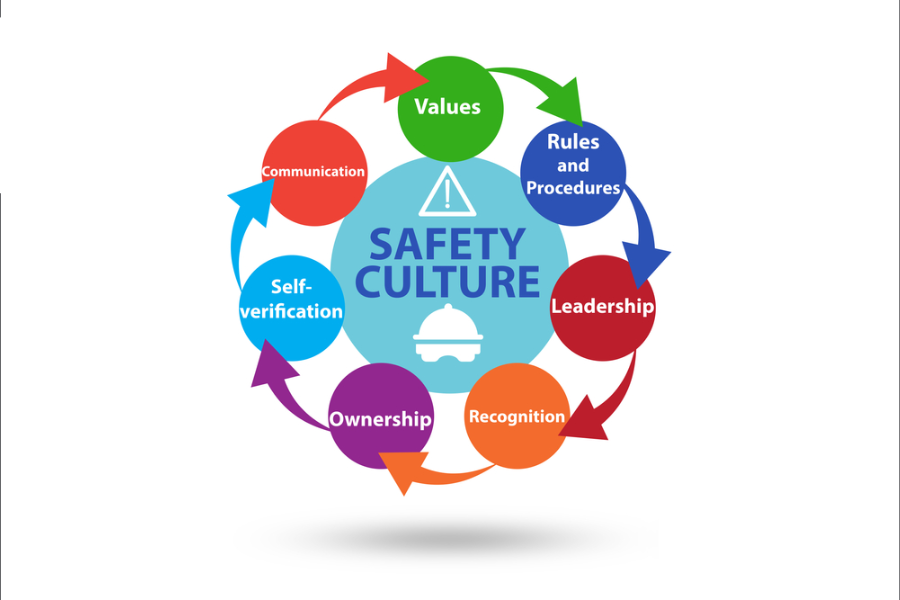Table of Contents
- Importance of Workplace Safety
- Identifying Hazards in the Workplace
- Implementing Safety Training Programs
- Enhancing Employee Engagement in Safety
- Utilizing Safety Management Software
- Monitoring and Evaluating Safety Performance
- Promoting Mental Health and Wellness
Improving workplace safety culture requires strong leadership commitment, employee involvement, and continuous education. Leaders should set clear safety expectations and lead by example. Encouraging open communication about safety concerns fosters a proactive approach, while regular training ensures that employees stay informed about best practices. Implementing a system for reporting hazards, offering incentives for safe behavior, and conducting frequent safety audits are crucial strategies. Together, these efforts create a safer, more accountable workplace environment.
Importance of Workplace Safety
Workplace safety is a cornerstone of a thriving and efficient work environment. Protecting employees ensures their well-being and boosts overall productivity and morale. An emphasis on safety reduces downtime caused by accidents and aligns with compliance requirements set forth by agencies like OSHA. Implementing effective safety measures demonstrates a company’s commitment to its workforce, which can enhance employee satisfaction and retention.
The use of technology is crucial to preserving a secure workplace. Tools like safety management software streamline tracking incidents, conducting audits, and training employees. These solutions can significantly enhance a company’s safety culture by systematically monitoring and managing workplace safety. By integrating such software, companies can anticipate problems and mitigate risks before accidents occur.
Identifying Hazards in the Workplace
The foundation of any robust safety program begins with identifying workplace hazards. Regular risk assessments are essential to pinpoint potential dangers and address them proactively. This involves not just physical hazards but also ergonomic and organizational ones. Encouraging employees to report unsafe conditions without fear of retribution is imperative for an honest assessment of risks. Regular walkthroughs and inspections, coupled with promoting a safety-first mentality, can create an environment where hazards are promptly identified and resolved.
Effective hazard identification involves various methods, including visual inspections, employee surveys, and historical data analysis. Integrating these methods can yield a thorough comprehension of possible hazards. By leveraging real-time data and historical trends, companies can predict and prevent potential risks, thus creating a safer work environment for everyone. This proactive approach is more efficient and less costly than dealing with incidents after they happen.
Implementing Safety Training Programs
Workplace safety largely depends on education and training, and comprehensive, ongoing training programs guarantee that staff members know how to carry out their responsibilities properly. Various training methods, such as workshops, safety drills, and digital learning platforms, should be utilized to accommodate different learning styles. This goes beyond imparting knowledge—it also involves ensuring staff members can use what they’ve learned in practical situations.
Regular training updates are essential to keep up with new safety protocols and industry standards. The hazards related to them change as industries do. Continuous learning and reinforcement of safety procedures can significantly reduce the likelihood of workplace accidents. Incorporating interactive and engaging training methods can also improve safety knowledge retention and application. This ongoing education demonstrates a company’s dedication to safety and continuous improvement.
Enhancing Employee Engagement in Safety
Engaging employees in safety initiatives is fundamental to cultivating a solid safety culture. Employees involved in safety planning and execution are more likely to adhere to safety protocols. Please include them in safety committees or task forces and actively seek their input on improving safety measures. This boosts morale and fosters a sense of ownership over safety practices.
Offering incentives for safe behavior and maintaining open communication channels can enhance engagement. Positive reinforcement and recognition for adhering to safety practices can motivate employees to prioritize safety. Furthermore, regular feedback sessions where employees can voice their concerns and suggestions can lead to practical safety improvements and foster a culture of continuous improvement.
Utilizing Safety Management Software
Incorporating advanced technology, such as safety management software, can streamline safety processes and improve overall safety culture. These tools enable businesses to track incidents, conduct audits, and generate comprehensive reports, ensuring all safety measures are followed meticulously. This centralized strategy makes better administration and coordination of safety operations possible.
The software aids in organizing training sessions, disseminating crucial safety information, and ensuring compliance with regulatory standards. It gives safety officers a single platform to handle all safety-related tasks, simplifying monitoring and promoting a safe workplace. Additionally, data analytics features enable companies to identify trends and areas that require immediate attention, thus fostering a proactive safety management approach.
Monitoring and Evaluating Safety Performance
Effective safety management does not end with implementation; continuous monitoring and evaluation are vital to maintaining high standards. Regular audits, employee feedback mechanisms, and performance metrics help ensure the ongoing effectiveness of safety protocols. As highlighted by NIOSH, data-driven approaches are particularly effective in tracking improvements and identifying areas needing attention. This systematic evaluation helps in making informed decisions to enhance safety measures.
Utilizing performance indicators such as incident rates, compliance rates, and employee feedback can provide valuable insights. Adjustments based on these evaluations can lead to continuous improvements in safety performance. Regularly revisiting and revising safety protocols ensures they remain relevant and practical, thereby minimizing risks and fostering a safety culture.
Promoting Mental Health and Wellness
Physical safety is vital, but mental well-being should not be overlooked. Addressing mental health issues and promoting wellness can significantly improve workplace safety. Employers should implement programs supporting mental health, such as stress management workshops, counseling services, and fostering a healthy work-life balance. Programs for mental health may be critical in lowering workplace stress and raising employee happiness.
Promoting an honest conversation about mental health and offering options for assistance may create a more welcoming and helpful work environment. Recognizing the impact of mental well-being on workplace safety is essential to cultivating a holistic approach to safety culture. By addressing physical and psychological wellness, companies can eventually guarantee a more thorough and efficient safety culture and a more resilient and productive staff.
Explore in-depth insights and exclusive stories at InternalInsider.com.










